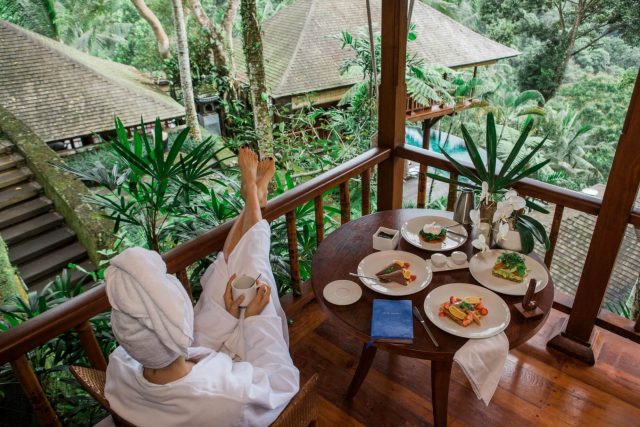Successful wellness trends are accessible, inexpensive and straightforward, which is why forest bathing (shinrin-yoku) is here to stay. The concept was developed in 1982 by the Japanese Ministry of Agriculture, Forestry and Fisheries and is being adopted globally. Here’s everything you need to know about Japan’s hottest healing export.
The Science
Remember when your parents told you to ‘go outside and play’ if you were in a bad mood growing up? Well, it turns out that they were on to something. Forest bathing expert and Japanese author Dr. Qing Li is a renowned authority on the subject of the healing power of trees. His research revealed that by simply relaxing, walking through, or being surrounded by trees we expose ourselves to plant chemicals (phytoncides) that naturally boost our immune system and increase our natural killer cells (NK) that enhance our mood, fight disease and lower stress hormone levels. Most recently, the nature bathing phenomenon reached Scotland and Washington, where doctors are writing ‘nature prescriptions’ to patients who are overweight, depressed and anxious. While evidence to support these findings is slim, scientists, doctors and universities are conducting more research than ever before to understand why being outdoors makes us feel healthier and happier.
The Basics
Forest bathing is precisely what it sounds like and involves getting away from urban environments and relaxing in nature, preferably under a canopy of trees. A quiet atmosphere, tech-free zone, nature and a sense of calm are the only things you need. You reap multiple benefits just by sitting and being in direct contact with trees, soil, and forest air. Hong Kong hiking trails offer the perfect escape from the city, and by simply turning off your phone for a while, slowing down your pace, and taking a few deep breaths, you can reap the benefits. If you’re finding it hard to work up the motivation to get outside, remember that a 25-minute walk per day can add at least three years to your life and reduce diabetes, osteoporosis and many more diseases.
The Forests
There’s nowhere better to try shinrin-yoku than Japan, and Tokyo is a great base to explore multiple forests from. Okutama was the first forest-therapy approved site in Tokyo and has five marked therapy trails. It’s about an hour and a half from the city and offers yoga and pottery workshops. Arisugawa-no-miya Memorial Park is a perfect quick city centre pit stop with two waterfalls and sections of dense forest, while Mount Takao and Totoro Forest are two other popular spots about an hour from Tokyo. For something immersive and new, Shishi-Iwa House is Karuizawa is a boutique hotel that uses design to explore the relationship between nature and people. The building reflects the flow of the forest and the garden features over 250 evergreens and cherry blossoms. Private and public walks can also be booked with the Shinrin Yoku Hong Kong if you want to try the trend closer to home.
Editor
Dervla LouliCredit
Lead image: Arthur Elgort/Conde Nast via Getty Images



